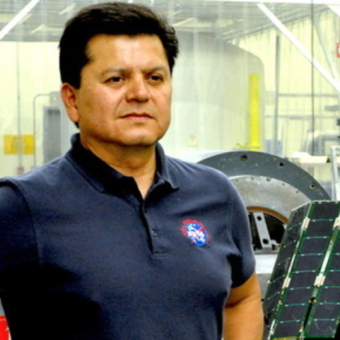
Profiles in Power highlights public officials nationwide who are improving their communities through their dedication, enthusiasm, creativity and experience.
This week’s profile is Andres Martinez, Advanced Exploration Systems (AES) Small Satellites Executive Program Officer at NASA.
Public career highlights and education: In 2010, I started working on space projects for NASA. Ever since then I’ve been project manager, managing single projects, and then I became program manager, managing a series of projects. Now, I’m a program executive, managing multiple programs to be a part of the Mars campaign office. We’re responsible for all the technology we’re going to need to send humans to Mars.
What I like best about public service: Working at NASA, as you can imagine, is an incredible experience. When I was in the private sector, we used to use the term, “launching a product” when making it available to the consumers. Here, we’re actually launching things.
But the best part this job is the opportunity to meet little kids, university kids and share with them what we’re doing, to share with them how we got to these positions that we hold today and how it is possible for them to also be part of this.
The best advice I’ve received: I’ll always remember the vice president of the division that I work for, when I when I was fresh out of college. He said, in order to go fast, you have to go slow. When he said it made no sense. But he was absolutely right, you have to do the planning, you have to write requirements, you have to do proper design because if you don’t do any of these key tasks, you’re going to pay the price later with poor quality, you’re going to be spending a lot of money and time fixing things.
People might be interested to know that: I come from a very humble family in Mexico. There are eight of us.
One thing I wish more people knew about NASA: We’re a very small team with a very small office and budget launching satellites into space. But one of the things that maybe not everyone knows is that within my office, and this I learned recently, we are the office that sponsors what we call environmental control: Life Support Services. For automation, we are the ones who continue to do research and development on this environment control live support services, and this is the systems that provide oxygen on the station.
How far away are we from sending people to Mars? A big indicator of how soon we’re going to go is going back to the moon and learning how to live on another planet, which is why we’re going to back to the moon. As soon as we start having successes and learning how to stay on the moon and living in a sustainable way. In parallel, we’re going to continue the technology development. But that’ll give us a better idea of how soon we’re going to Mars. In the meantime, we’re going to continue working on the technologies we know we need to get us there.
The post ‘In order to go fast, you have to go slow,’ NASA officer says appeared first on Government Market News.
